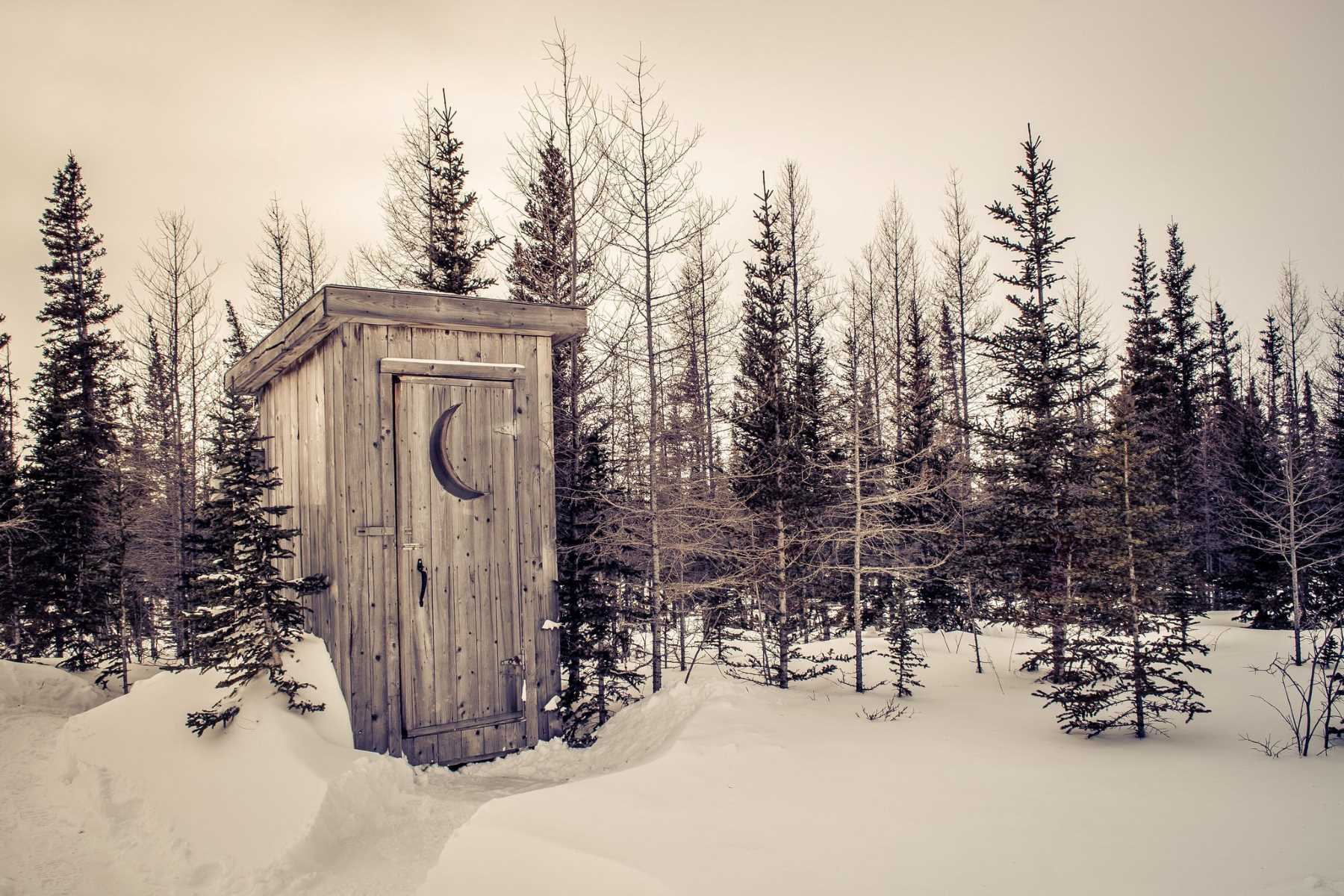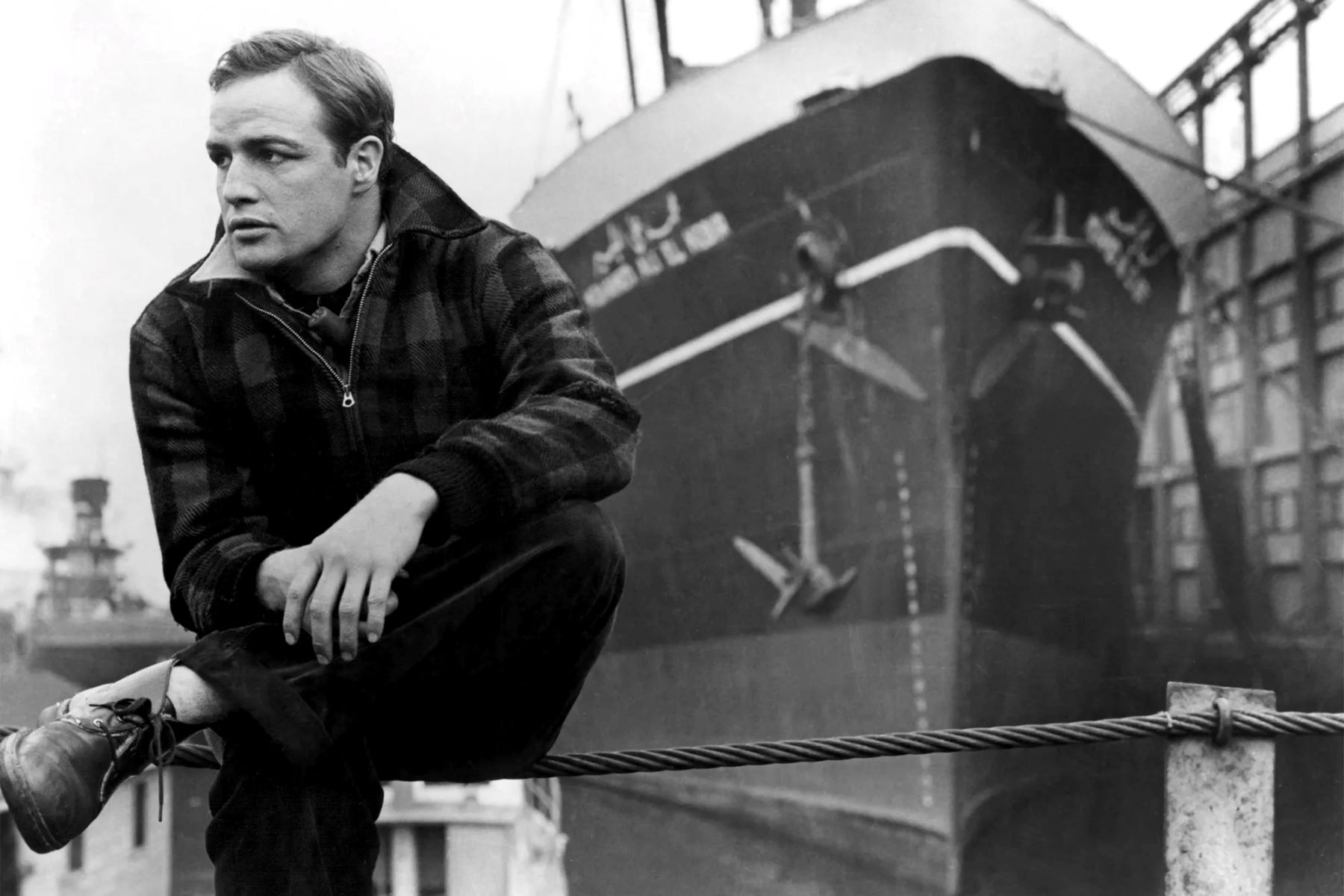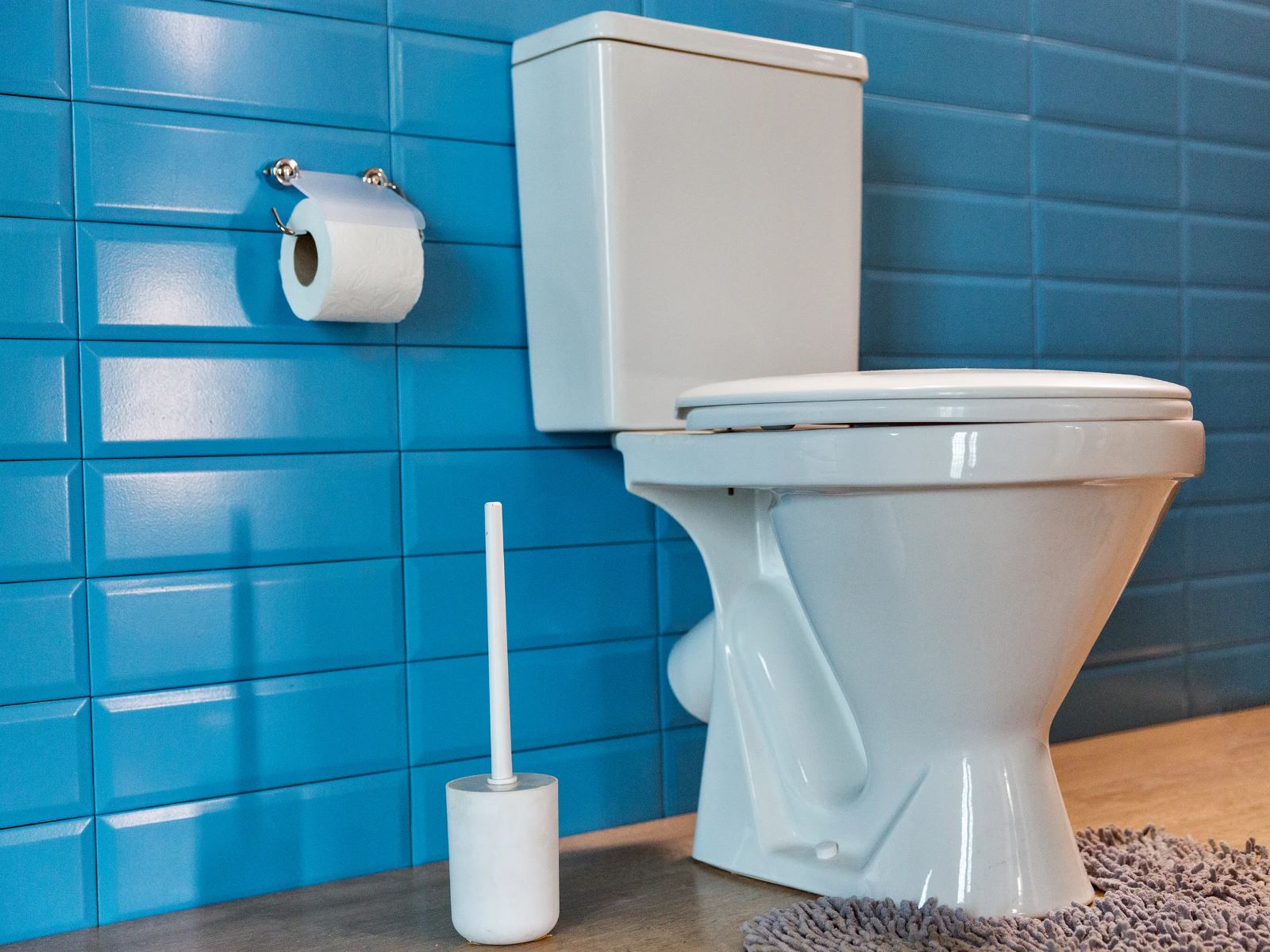Home>History>The Surprising Reason Behind The Crescent Moon On American Outhouse Doors


History
The Surprising Reason Behind The Crescent Moon On American Outhouse Doors
Published: January 6, 2024
Discover the fascinating history behind the crescent moon on American outhouse doors and the surprising reason for its presence. Explore the intriguing origins of this unique cultural tradition.
(Many of the links in this article redirect to a specific reviewed product. Your purchase of these products through affiliate links helps to generate commission for Regretless.com, at no extra cost. Learn more)
Table of Contents
Introduction
The humble outhouse, a staple of rural American history, has a unique feature that has piqued the curiosity of many: the crescent moon adorning its door. This seemingly innocuous symbol holds a fascinating history that dates back centuries, intertwining practicality, cultural evolution, and a touch of whimsy. Delving into the origins of this enigmatic emblem unveils a captivating narrative that sheds light on the resourcefulness and creativity of our ancestors.
The intriguing allure of the crescent moon on outhouse doors has sparked countless conversations and speculations. While some may dismiss it as a mere decorative element, its presence carries a deeper significance that transcends its rustic appearance. As we embark on a journey through time and tradition, we will unravel the surprising tale behind this enduring symbol and gain a newfound appreciation for the ingenuity woven into the fabric of everyday life.
The History of Outhouses
The history of outhouses is deeply rooted in the evolution of human sanitation practices. Dating back to ancient civilizations, the concept of separating human waste from living spaces has been a fundamental aspect of communal living. In ancient Rome, for instance, public latrines were constructed with multiple seats, offering a communal space for individuals to attend to their biological needs.
As societies progressed, the need for private, individualized facilities became apparent. This led to the emergence of the outhouse, a small structure typically located outside the main dwelling. Outhouses were prevalent in rural areas and served as a primary means of waste disposal for households that lacked indoor plumbing.
The design of outhouses varied widely, ranging from simple single-seater structures to more elaborate multi-compartment buildings. These structures were often constructed using locally available materials, reflecting the resourcefulness and practicality of their builders. Outhouses were strategically positioned at a distance from the main residence to minimize odors and maintain a level of privacy.
Throughout history, the outhouse played a crucial role in maintaining hygiene and sanitation, especially in regions where indoor plumbing was not readily accessible. While the outhouse may evoke images of simplicity and rustic charm, its presence was integral to promoting public health and environmental cleanliness.
As advancements in plumbing and sewage systems became more widespread, the prevalence of outhouses gradually declined. However, the legacy of these humble structures endures, serving as a testament to the ingenuity and adaptability of earlier generations in addressing fundamental human needs.
The history of outhouses offers a glimpse into the resourcefulness and practicality of our ancestors, highlighting the significance of sanitation in shaping communal living practices. This historical backdrop sets the stage for unraveling the intriguing origins of the crescent moon symbol adorning outhouse doors, weaving together practicality, tradition, and cultural evolution in a captivating tapestry of human ingenuity.
The Origin of the Crescent Moon Symbol
The origin of the crescent moon symbol on outhouse doors can be traced back to centuries-old European traditions. In medieval times, when much of Europe lacked widespread literacy, symbols and icons played a pivotal role in conveying messages and information. The crescent moon, a familiar celestial body, was chosen as a simple yet effective symbol to indicate the gender of the outhouse occupant.
The practice of using the crescent moon as a gender marker can be attributed to the cultural norms and practical considerations of the time. In many European societies, it was customary for households to have separate outhouses for men and women. To differentiate between the two, the crescent moon was affixed to the door of the women's outhouse, while the sun symbol adorned the men's facility. This straightforward visual cue allowed individuals to identify the appropriate outhouse without the need for written or verbal communication.
The choice of the crescent moon as a symbol for the women's outhouse is steeped in historical and cultural significance. The crescent moon has long been associated with femininity and the lunar cycle, symbolizing fertility, intuition, and the nurturing aspects of womanhood. By incorporating this symbol onto the outhouse door, a subtle yet meaningful connection was established between the celestial realm and the realm of human bodily functions.
As European traditions and customs made their way to the American continent through waves of immigration, the practice of using the crescent moon symbol on outhouse doors endured. Settlers and pioneers, seeking familiarity and continuity in their new surroundings, brought with them the customs and symbols that were integral to their way of life. The use of the crescent moon as a gender marker on outhouse doors thus became ingrained in American rural culture, preserving a tangible link to the Old World amidst the challenges and uncertainties of the New World.
The adoption of the crescent moon symbol in American outhouses reflects the enduring power of cultural symbols to transcend time and space, bridging continents and generations through a shared visual language. This simple yet evocative emblem continues to capture the imagination and curiosity of those who encounter it, serving as a poignant reminder of the enduring legacy of tradition and the timeless appeal of celestial symbolism.
The Practical Reason for Using Crescent Moon on Outhouse Doors
The practical reason for using the crescent moon on outhouse doors extends beyond its symbolic significance. In addition to serving as a gender marker, the crescent moon offered a pragmatic solution to a common logistical challenge faced by individuals utilizing outdoor latrines.
During the nighttime, when visibility was limited, especially in rural areas with minimal artificial lighting, finding the appropriate outhouse could prove to be a daunting task. The use of the crescent moon as a distinctive identifier allowed individuals, particularly women and children, to navigate with ease and locate the women's outhouse without confusion or inconvenience. This simple yet effective visual cue provided a sense of reassurance and privacy, especially during the darkness of night.
Moreover, the crescent moon's placement on the outhouse door served as a functional indicator of occupancy. When the door was closed, the crescent moon was visible from a distance, signaling that the facility was in use. This practical feature helped prevent accidental intrusion and ensured privacy for the occupant.
The utilization of the crescent moon as a practical marker exemplifies the resourcefulness of earlier generations in addressing everyday challenges. By integrating a familiar celestial symbol into the fabric of daily life, individuals were able to navigate and utilize outhouses with a degree of convenience and discretion, enhancing the overall experience of outdoor sanitation.
As the outhouse evolved from a necessity to a relic of the past, the practical function of the crescent moon symbol remains an intriguing testament to the ingenuity of our ancestors. Its enduring presence on outhouse doors serves as a tangible reminder of the thoughtful considerations woven into even the most mundane aspects of human existence, reflecting a harmonious blend of practicality and symbolism that continues to captivate and intrigue.
The Symbol's Evolution in American Culture
The crescent moon symbol's journey through American culture reflects a fascinating evolution, intertwining tradition, adaptation, and enduring symbolism. As waves of European immigrants brought their customs and practices to the New World, the crescent moon on outhouse doors found a place in the rural landscape of America. This enduring symbol became an integral part of the cultural tapestry, embodying a sense of continuity and familiarity amid the challenges of pioneering life.
Over time, the crescent moon transcended its original function as a gender marker and practical identifier, acquiring additional layers of meaning within American rural communities. It became a cherished emblem, steeped in nostalgia and folklore, evoking a sense of connection to the Old World while embracing the distinct character of the American frontier.
In the vast expanse of rural America, the presence of the crescent moon on outhouse doors symbolized more than just a facility for bodily needs. It became a visual reminder of the shared experiences and communal values that bound neighbors and families together. The act of tending to the outhouse, with its distinct crescent moon, fostered a sense of unity and mutual understanding among individuals who relied on these simple yet essential structures.
Furthermore, the crescent moon symbol found its way into the realm of folk art and storytelling, becoming a subject of creative expression and folklore. Its enigmatic presence inspired tales and legends, adding a touch of whimsy and mystery to the everyday lives of rural Americans. The symbol's enduring allure sparked curiosity and imagination, transforming it into a cherished cultural motif that transcended its humble origins.
As modernization and urbanization gradually reshaped the American landscape, the outhouse and its iconic crescent moon began to fade from everyday life. Despite this shift, the symbol's legacy persisted, preserved in the collective memory of those who remember a time when the crescent moon held a place of honor on outhouse doors across the countryside.
Today, the crescent moon on American outhouse doors stands as a poignant reminder of a bygone era, a testament to the enduring influence of tradition and the enduring power of symbols to unite and captivate across generations. Its evolution in American culture reflects the resilience of timeless emblems, weaving a narrative of adaptation, nostalgia, and the enduring spirit of rural communities.
Conclusion
The enigmatic crescent moon adorning American outhouse doors encapsulates a rich tapestry of history, tradition, and practical ingenuity. From its origins in medieval Europe to its enduring presence in the rural landscapes of America, this humble symbol has transcended its utilitarian function, evolving into a cherished emblem that embodies the resilience and creativity of earlier generations.
As we reflect on the surprising reason behind the crescent moon on outhouse doors, we uncover a narrative that extends far beyond its simple appearance. It serves as a tangible link to the past, connecting us to an era when everyday objects were imbued with cultural significance and practical innovation. The crescent moon symbolizes the resourcefulness of our ancestors, who ingeniously integrated celestial imagery into the fabric of daily life, infusing even the most mundane structures with a touch of symbolism and tradition.
The enduring allure of the crescent moon on American outhouse doors lies in its ability to evoke a sense of nostalgia and wonder, transcending its original purpose as a gender marker and practical identifier. It has become a cherished cultural motif, inspiring folklore, art, and storytelling, and fostering a sense of community and shared experience among rural inhabitants. Its gradual disappearance from the American landscape underscores the profound changes that have reshaped our way of life, yet its legacy endures as a testament to the enduring influence of tradition and the timeless appeal of symbols.
In unraveling the history and significance of the crescent moon on outhouse doors, we gain a deeper appreciation for the profound impact of everyday objects on the cultural tapestry of a society. This enduring symbol serves as a poignant reminder of the enduring power of tradition, adaptation, and the human spirit, weaving a narrative that transcends time and place. It invites us to cherish the ingenuity and creativity of our predecessors, whose thoughtful considerations continue to captivate and intrigue, leaving an indelible mark on the collective memory of generations to come.













